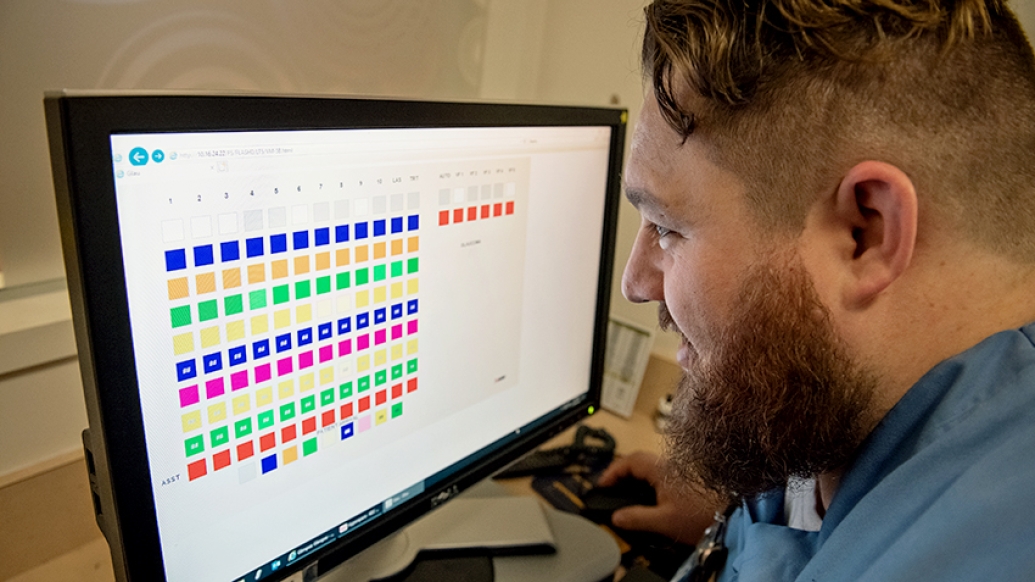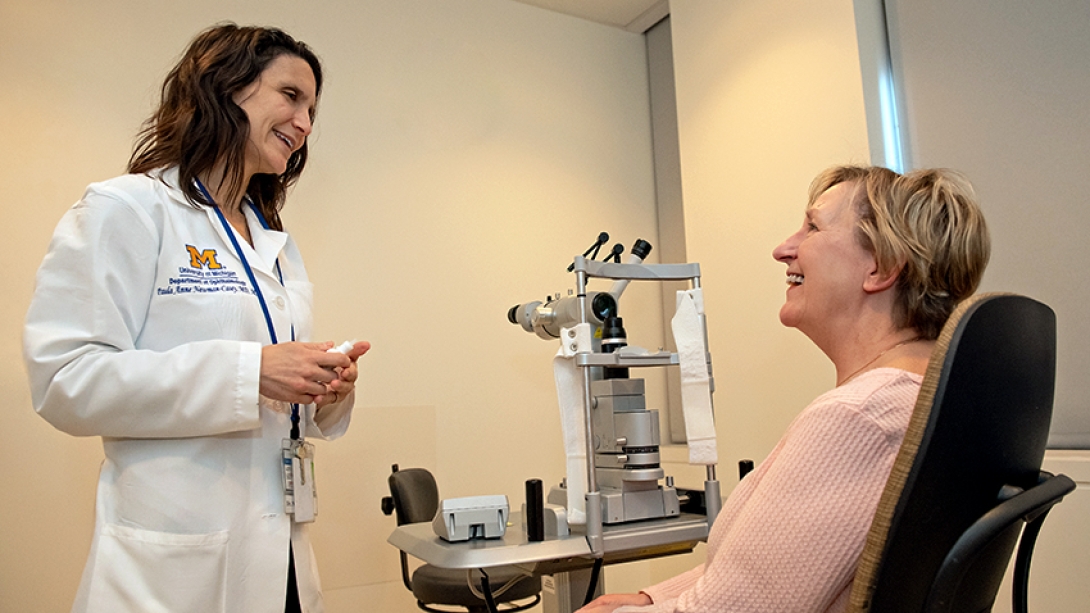A popular type of data collection is helping Kellogg providers make visits more meaningful for patients and reduce wait times.
7:00 AM
Author |

Technology that retailers use to make a shopping experience more efficient could also benefit your next eye appointment.
Called radiofrequency identification, or RFID, the tool helps streamline operations by knowing where everything is and where everything goes. It can help a large store maintain a clearer picture of inventory counts, for example.
LISTEN UP: Add the new Michigan Medicine News Break to your Alexa-enabled device, or subscribe to our daily audio updates on iTunes, Google Play and Stitcher.
At the University of Michigan Kellogg Eye Center, RFID serves another purpose: to track and reduce patient wait times and enhance time spent at the doctor's office.
A partnership between Kellogg and the U-M Center for Healthcare Engineering and Patient Safety (CHEPS) unlocked a whole new realm of potential applications for RFID technology.
"We were trying to understand how to better integrate education into the glaucoma clinic visit," says Paula Anne Newman-Casey, M.D., an assistant professor of ophthalmology at Michigan Medicine. "And it took on a life of its own."
RFID uses small tags or chips to transmit a signal to remote scanners. Over the past decade, the tags have gotten cheap enough to attach to everyday items, from soup to leggings — and they've been used in car ignitions and electronic toll booths for years.
Which is why Kellogg doctors, ophthalmic technicians, medical assistants and more than 2,000 patients in the glaucoma clinic agreed to wear ID tags implanted with an RFID chip.
What resulted was a "smart clinic" with real-time localization of health care providers and continuous capture of patient wait times. Wait time was measured as any period that a patient was alone — and not getting tests or being examined or counseled by a provider.
"Good decision-making depends on good data, and RFID tags enabled us to get up-to-the-second granular data to truly understand how patients and providers move through the clinic," says Amy Cohn, Ph.D., associate director of CHEPS and a professor of industrial and operations engineering.
Efficiency improves care
Most eye care professionals know that clinic visits are already long. And wait times are a major indicator of whether patients are happy with their health care.
MORE FROM THE LAB: Subscribe to our weekly newsletter
A new patient's visit can take two to three hours with multiple tests, such as a visual field test to detect blind spots and other defects that could be signs of eye problems.
Using the RFID data, the smart clinic team at Kellogg can now experiment with changes in scheduling, staffing and operations within a simulated model of the clinic and determine with 80 percent accuracy the impact on patient wait times.

Even better, the data may also boost efficiency of clinic visits to include additional education and counseling opportunities.
Among them: one-on-one coaching to improve patients' medication adherence and discussion about new glaucoma treatments.
As a glaucoma specialist, Newman-Casey knows self-management is a major concern. Glaucoma is a leading cause of irreversible blindness in the United States. Yet at least half of glaucoma patients do not take the medications that prevent vision loss.
With support from the National Eye Institute and Research to Prevent Blindness, Newman-Casey is creating a strategic framework to address the issue.
"We hope to schedule patients in a more respectful way that acknowledges the complexity that goes into glaucoma care and recognizes the burden on patients of managing a chronic disease," says Newman-Casey, who is also refining a web application that helps train medical assistants to motivate and support glaucoma patients.
Through early analysis and schedule changes, the glaucoma clinic has been able to add more patient appointments without increasing patient waits.
RFID tags enabled us to get up-to-the-second granular data to truly understand how patients and providers move through the clinic.Amy Cohn, Ph.D.
Boosting transparency
The RFID tracking technology fulfilled a need not easily achieved with current electronic medical record systems that can tell when appointments start and finish.
RFID can detect where backlogs are happening and when patients are left waiting.
SEE ALSO: Tell Your Smartphone Where It Hurts: New App Tracks Pain
Another smart clinic innovation: a dashboard interface developed by Michigan Medicine's information technology staff that uses RFID tracking data to indicate how much time clinicians and patients have been in each room.
When in use, an ophthalmic technician monitored the live feed. On screen, patients were represented by dots that grew bigger as they waited.
Doctors would occasionally be alerted about patients in limbo who needed a friendly reassurance that they'd be seen soon.
The use of RFID has since drawn the attention of the Office of Patient Experience at Michigan Medicine, which could one day use the simulation model across its facilities.
"(The model) is close enough to how our clinic operates that if we want to test new ideas, we can do it in this simulated model to discover how it would impact patient volume and patient times before we roll it out," says Newman-Casey, also a policy researcher at the U-M Institute for Healthcare Policy and Innovation.
For now, it's helping add value to every moment for Kellogg patients and providers.
Photos by Leisa Thompson

Explore a variety of health care news & stories by visiting the Health Lab home page for more articles.

Department of Communication at Michigan Medicine
Want top health & research news weekly? Sign up for Health Lab’s newsletters today!





